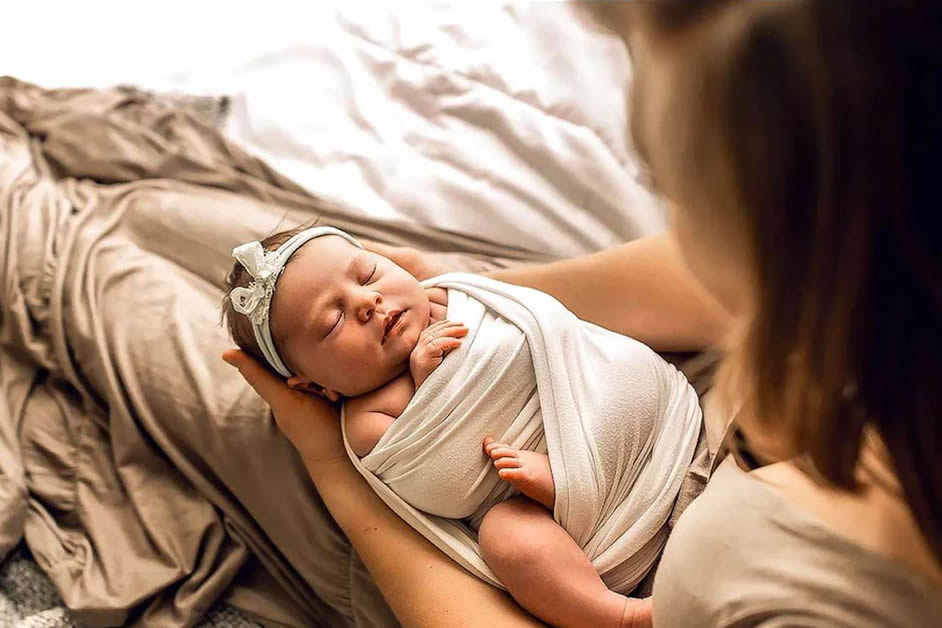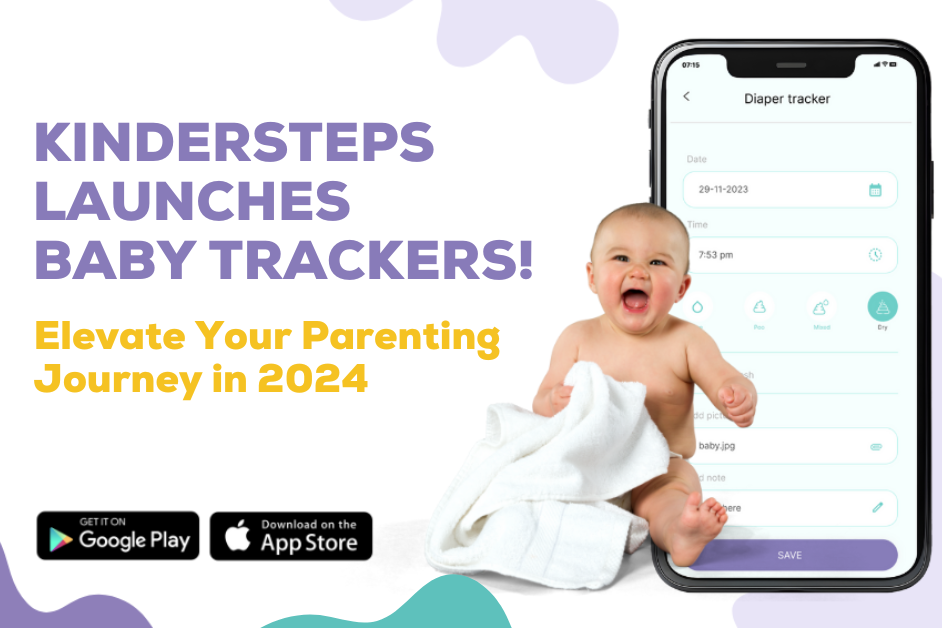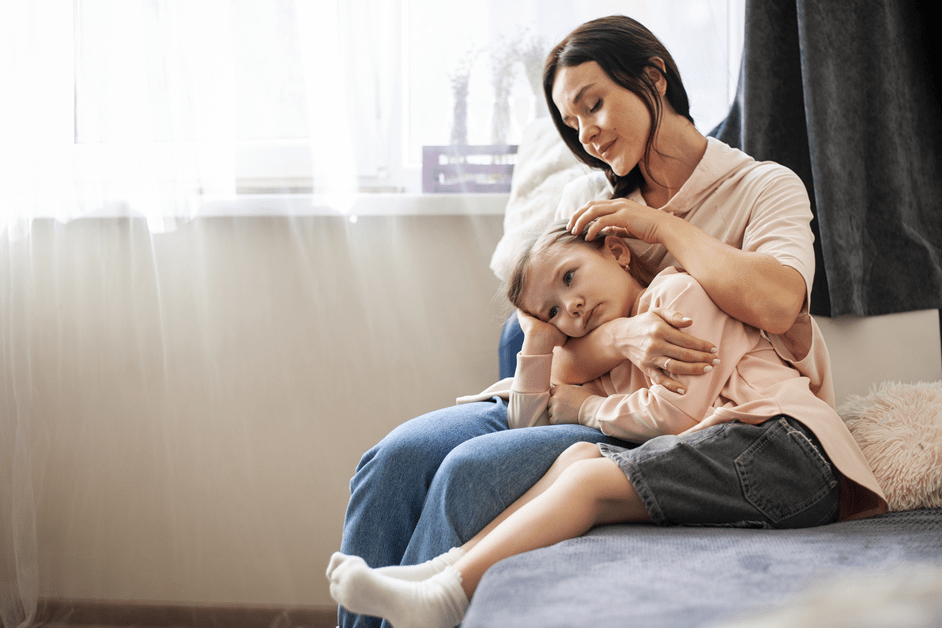As your baby emerges from the cozy darkness of your womb and enters the world, you might wonder what she can actually see. The truth is, not much—at least not yet. But don't fret, because that will change in no time.
In the first six months of life, they don't have the sharpest eyesight, but that's perfectly normal.
Your baby's eyesight undergoes rapid development, closely intertwined with the growth of their brain. So as your little one's mind blossoms and flourishes, so does her ability to perceive the world around her. As a parent, understanding these developmental milestones is crucial as it allows you to provide the necessary support and enhance your baby's visual experiences.
Get ready to witness the wonders of your baby's rapidly evolving eyesight as they begin to perceive and engage with the fascinating world around them. Let's dive in together and embark on this enlightening exploration of your baby's visual development, discover the key milestones that lie ahead, and uncover the secrets to optimizing their visual experiences.
Infant vision: From birth to a few weeks old
So, let's talk about what your little bundle of joy can see in those first few weeks of life. During the gestational period, your baby's eyes start developing around the fourth week of pregnancy. By the sixteenth week, they can perceive light, even though their eyelids remain closed until around the twenty-sixth week. So, when your baby finally enters the world, it's a whole new visual experience for them. Everything is still pretty fuzzy, and their visual range is limited to about 8 to 10 inches, roughly the distance between your arms and face.
Newborns can be quite different when it comes to their visual responses. Some may immediately focus on faces, while others need a bit more time to adjust to their expanded surroundings. The pace of their visual development depends on factors like gestational age and individual personality. In the first month, babies tend to keep their eyes closed most of the time as they sleep for long stretches. But when their eyes do open, they can't quite track moving objects yet. However, they do love looking at faces, so make sure to give them plenty of up-close-and-personal time with you and other caregivers.
Infant vision: 2 to 3 months old
Around two to three months old, your baby's visual abilities start progressing. They may begin recognizing faces, which is such a joy to see when you witness their first smile. But their sight is still pretty blurry at this stage. If your baby was born prematurely, it might take a little longer for them to focus on faces, but don't worry, they'll catch up. You'll also notice their ability to distinguish different colors starting to emerge.
Infant vision: 3 to 4 months old
By the time your baby reaches three to four months old, their vision expands even further. Now they can see objects several feet away and even across the room. Their eyesight improves when it comes to tracking faster movements, perceiving depth, and reaching for moving objects, although their hand-eye coordination is still developing. One exciting milestone during this period is their eyes working together, which leads to the development of depth perception. And now, they can recognize faces with much greater clarity, a significant advancement in their visual perception.
Infant vision: 12 months old
Fast forward to your baby's first birthday. At this point, their vision capabilities closely resemble that of adults. They can see and observe their surroundings with increasing clarity, just like the singing adults surrounding them during the celebration. It's amazing how quickly their vision develops in just one year.
How to improve your infant's vision?
Improving your baby's eyesight doesn't require complicated interventions. There are simple activities you can incorporate into your daily routine to support their visual development.
When you're breastfeeding or bottle-feeding, make sure your face is at a distance where your baby can see it clearly.
Engage in conversations and maintain eye contact with your baby. This not only strengthens your bond but also helps them begin to learn language.
Hanging a colorful and patterned mobile above their crib or bouncy seat can capture their attention. Babies love images with contrasting colors and patterns, and this visual stimulation aids their visual perception. Just remember to remove the mobile once they can sit up to avoid any entanglement risks.
Mirrors can also be fascinating for babies. Although they may not recognize themselves until around fifteen months old, they enjoy observing the changing image reflected back at them as they move. Mirrors provide a visual delight and stimulate their curiosity.
Another effective way to support your baby's visual development is to include them in your daily activities. Use a forward-facing carrier and take them along as you go about your day. Describe the sights and sounds you encounter, which promotes their verbal development while they observe the world around them.
Signs of infant vision problems
While most infant vision problems require professional evaluation by a pediatrician or ophthalmologist, there are a few signs that you can monitor as a parent. Early intervention is crucial for addressing any potential issues promptly.
One visual indicator to watch out for is the presence of "red eye" in photographs. Don't worry; this redness occurs when the baby's eyes correctly refract light. However, if you notice whiteness in the pupils of your baby's eyes in photos, it could be a sign of leukocoria. This may indicate serious problems like cataracts or tumors, so it's essential to consult a pediatrician for immediate attention if you notice this.
Observing your baby's ability to focus is another important aspect. It's normal for their eyes to occasionally appear misaligned in the first few months (strabismus). But if misalignment continues past four months, it's a good idea to have a pediatrician check it out.
Similarly, if your baby consistently avoids focusing on your face or seems to be looking through or around you, it's advisable to seek medical advice. If your baby shows disinterest in new visuals or struggles to track objects by around four months, it's recommended to consult your doctor.
Other eye-related symptoms that warrant a visit to the doctor include bulging eyes, rapid fluttering of the eyes, persistent redness or wateriness, sensitivity to light, itching, or eye pain. Any concerns regarding your baby's vision should be addressed by a healthcare professional for a thorough examination.
What’s in store for your kiddo’s eye adventure?: Their first eye exam
Regularly visiting your baby's doctor ensures that potential vision issues are identified early. Pediatricians routinely screen babies for vision problems during checkups. If any concerns arise during these screenings, your doctor may refer you to a pediatric ophthalmologist for further evaluation.
If your child doesn't have any risk factors, their first vision screening typically occurs between three and a half to four years of age. At this stage, children can verbalize what they see and provide more detailed feedback during the examination, including reading from an eye chart.
Ensuring regular eye exams for your child plays a vital role in maintaining their visual health and addressing any potential concerns as early as possible.
Exploring your baby's vision development is like embarking on a thrilling adventure that goes hand in hand with their overall growth and cognitive milestones. It's a journey filled with awe-inspiring moments, just like the Kindersteps app, which brings you 1500+ early childhood developmental activities for kids between 0-5 years old. With Kindersteps, you can deepen the bond with your child through daily suggested activities and a private newsfeed, because we believe in giving you and your children nothing but the best.
As a parent, you have the power to actively contribute to enhancing their eyesight through simple interactions and engaging activities. Download the Kindersteps app now, track your child’s milestones, and embark on this incredible journey together.
Remember, it's important to stay attentive to any signs of vision problems and seek professional guidance when needed. By taking proactive steps to support your baby's visual health and well-being, you're giving them the best start in life.






.jpg?alt=media&token=166b64a9-274c-400c-95e4-baf0013e7e43)
